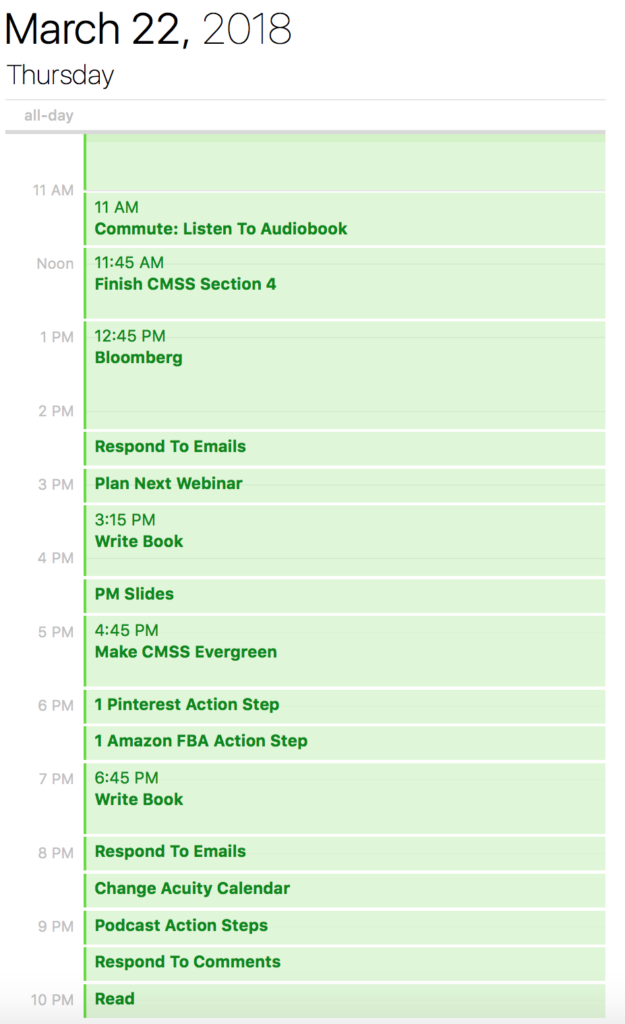
It’s incredible easy to start a brand around yourself. Some would say that you started a personal brand the moment you created your first account on a social network.
Part of your personal brand is how people see you and your work. That’s where social media and all of your online activity come into play.
But we’re not just talking about creating a bunch of social media accounts and calling it a day. We all have one chance to impact as many people as we want. With today’s technology, you can impact many people while still living your ideal lifestyle.
Here’s the playbook for creating a thriving brand around yourself…
Step #1: Get Clear On Your Topic And How You’ll Provide Content
The essential step for any brand is to get clear on your topic and how you’ll provide content. You can cover an infinite array of topics, but you should only choose to build a brand on the few topics that you’re passionate about (less is more).
Once you determine what you’ll cover, you need to decide how you’ll distribute that content. In this case, more is better. If you can distribute your content as blog posts and videos, but you don’t have a podcast, you’re missing out on a big segment of your audience.
People have different ways of learning. Some prefer reading blog posts while others prefer videos or podcast episodes.
While it may seem intimidating to crank out so much content, it’s not as hard as most people think. All you need is an effective content repurposing strategy, and you can literally turn one piece of content into dozens.
Video files can easily be turned into audio files for a podcast. You can embed the video into your blog post and write a little about it.
I have a preference towards creating video content because it becomes much easier to then repurpose that content. But start with what works best for you. I was a blogger for at least two years before I did my first video.
Regardless of which ways you decide to create content for your audience, make sure you’re consistent. Aim for at least one new blog post, video, and/or podcast every week. As you get more comfortable with creating content for your audience, inch the frequency closer to daily content.
The more content you provide, the more your audience will remember to check back in for more content from you.
Step #2: Promote That Content So It Reaches More People
You can create a bunch of great content, but if no one sees that content, your content isn’t serving anyone.
Part of being a brand is serving your audience and getting your content seen.
Too many people fall in love with the content creation so much that they keep creating but then skip over the marketing.
Ideally, you should spend more time marketing than creating your content.
That may sound crazy to people who enjoy creating content and tend to spend hours of their time crafting their content, but marketing is what grows the audience.
The easiest way to promote your content is to share it with all of your social media followers. Anytime I publish a new piece of content, it automatically goes out to my Twitter, Facebook, and LinkedIn audiences. I’ll also schedule posts for Instagram and Pinterest to reach more people in my audience.
Reaching out to existing people in your audience is a great way to gain traction for your content. However, you also need to attract more people outside of your audience.
We cover this part in more depth over at the Content Marketing Success Summit, but one thing you can do is reach out to more people who don’t know about you yet.
When I mention someone in a blog post or video, I let that person know. Many of these people will proceed to share my content, and some of them continue consuming my content to this day.
Another great way to reach out to people is by inviting them to be a guest on your podcast. I’ve interviewed hundreds of people through my podcasts and summits who previously did not know about my brand. The majority of guests then promote their episode or summit session to their tribes as soon as that content goes live.
Doubling down on your marketing is one of the best ways to grow your brand.
Step #3: Monetizing Your Brand
When you master the first two steps, you have a brand that many people know about. The third step to having a thriving brand is monetizing your brand.
Ideally, monetization is something that you’ve been working on since Day #1, but you should put far more time into monetizing your brand once you have the audience.
There are plenty of ways to monetize your brand, but the key is to start what best works for you and expand your offerings over time.
The reason we want to expand our different offerings is because people have different types of products they prefer.
Some people prefer training courses while other people prefer books. Both of these types of products can become solid streams of income and work for anyone’s niche.
Once you create these kinds of products, all you have to do is lead people to them. For this step, I use ClickFunnels to create an elegant sequence of events that turns each new subscriber from a new person who just heard about me to a warm lead.
I send any of the traffic I get to opt-in pages designed to grow my email list and get sales for my business.
At the end of the day, you need money to keep your business going.
In Conclusion
Monetizing your brand requires a specific mindset. You create content with the aim of marketing it. You market your content with the aim of getting more people into your funnel.
The best way to approach the work is to think about it in reverse. Most people create content, then think about marketing it, and then think about monetizing it.
Instead, you need to think right away about how you’ll monetize. That will influence what content topics you’ll focus on.
What were your thoughts on this article? Do you have any questions for me? Sound off in the comments section below.




